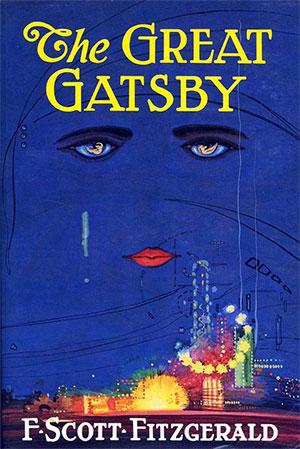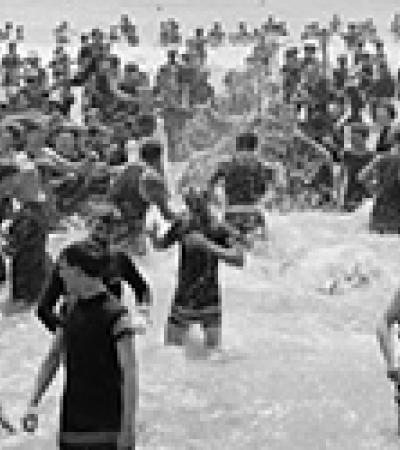This month, EDSITEment looks at a chapter from Michael Shaara’s The Killer Angels; celebrates Asian-Pacific Heritage Month and Jewish-American Heritage Month; considers Winslow Homer’s The Veteran in a New Field; rereads the Great Gatsby; previews two new PBS series; and shares two great humanities websites.
What Is Courage; How Should We Cultivate It?
“Chamberlain” is a chapter from The Killer Angels, the Pulitzer Prize-winning historical novel about the Battle of Gettysburg by Michael Shaara (1928–88). A prolific writer of science fiction and sports stories, Shaara was inspired to write the novel after discovering letters written by his great-grandfather,who had been injured at Gettysburg as a member of the Fourth Georgia Infantry. This Launchpad provides background materials and discussion questions to enhance your reading and understanding of “Chamberlain.” After reading the story, you can click on the videos to hear a discussion of the story.
Asian-Pacific Heritage Month
Asian-Pacific Heritage Month was established in 1990 to mark the arrival of the first Japanese immigrant to the United States on May 7, 1843, as well as the anniversary of the completion of the transcontinental railroad on May 10, 1869. The first Japanese national to set foot on American soil was a young fisherman named Manjiro who was to become influential in ending Japan’s centuries of isolation. Though Manjiro’s name and legendary life story is celebrated by the children in contemporary Japan, fame has eluded him this side of the Pacific where he remains a footnote in American maritime history. This month, EDSITEment honors Manjiro Nakanohama, also known as John Mung, by telling his story and offering students an interactive map of his voyage around the Pacific.
Jewish-American Heritage Month
Each May, EDSITEment celebrates Jewish-American Heritage Month by pointing to the rich array of educational resources on this subject. Many of the programs listed are films that appeared on PBS as stand-alone specials or as part of long-running series such as American Experience and American Masters. Many of them have been funded in part by grants from the National Endowment for the Humanities over the past decades. Each of them is accompanied by a multimedia website or Web page, which extends the life of the program with video clips, images, and interactives that can be used by teachers in their classroom or students doing research.
Homer’s Civil War Veteran: Battlefield to Wheatfield
How did Civil War soldiers and their torn country return to peace after four years of fighting? In “Homer’s Civil War Veteran: Battlefield to Wheat Field,” students consider Civil War veterans’ possible memories and emotions as they returned to civilian jobs. Students study symbolism in Winslow Homer’s painting, The Veteran in a New Field, and compare it to a photograph of the aftermath of a Civil War battlefield. After reading James Wren’s Diary entry, they write about and role-play a returning veteran.
The “Secret Society” in The Great Gatsby

The high school social scene is rife with drama. Who’s out? Who’s in? What’s cool? What’s not? Behind many of the questions is a burning desire to belong. To assert their status in a crowd, students must learn the unwritten and unspoken codes of behavior. Students’ own experience of the struggle to belong can provide a starting point for an exploration of how concerns about wealth, race, geographical origins, and other factors affect the perception of social status in F. Scott Fitzgerald’s The Great Gatsby. The new film, out this month, will send students racing back to the original F. Scott Fitzgerald novel from 1925 and spark discussions of class, gender, and status in the “Roaring Twenties.”
NEH Connections
Constitution USA
Does the Constitution have what it takes to keep up with modern America? Join Peter Sagal, host of NPR’s Wait Wait … Don’t Tell Me!, as he hits the road to find out in Constitution USA. Traveling across the country by motorcycle, Sagal is in search of where the U.S. Constitution lives, how it works and how it doesn’t … how it unites us as a nation and how it has nearly torn us apart.
The Jewish Americans
The Jewish Americans is a three-night documentary that explores 350 years of Jewish American history. Written and directed by award-winning filmmaker David Grubin, The Jewish Americans is a journey through time, from the first settlement in 1654 to the present. It is about the struggle of a tiny minority who make their way into the American mainstream while, at the same time, maintaining a sense of their own identity as Jews. Focusing on the tension between identity and assimilation, The Jewish Americans is quintessentially an American story, which other minority groups will find surprisingly familiar.
Best of the Humanities on the Web
Veteran’s History Project
The Veterans History Project of the American Folklife Center collects, preserves, and makes accessible the personal accounts of American war veterans so that future generations may hear directly from veterans and better understand the realities of war.
The Story of Movies
The Film Foundation’s interdisciplinary curriculum, The Story of Movies, was developed to expose new generations to classic cinema and to teach them about the cultural, artistic, and historical significance of film. Teaching units include Robert Mulligan’s To Kill a Mockingbird (1962), Frank Capra’s Mr. Smith Goes to Washington (1939), and Robert Wise’s The Day the Earth Stood Still (1951).



